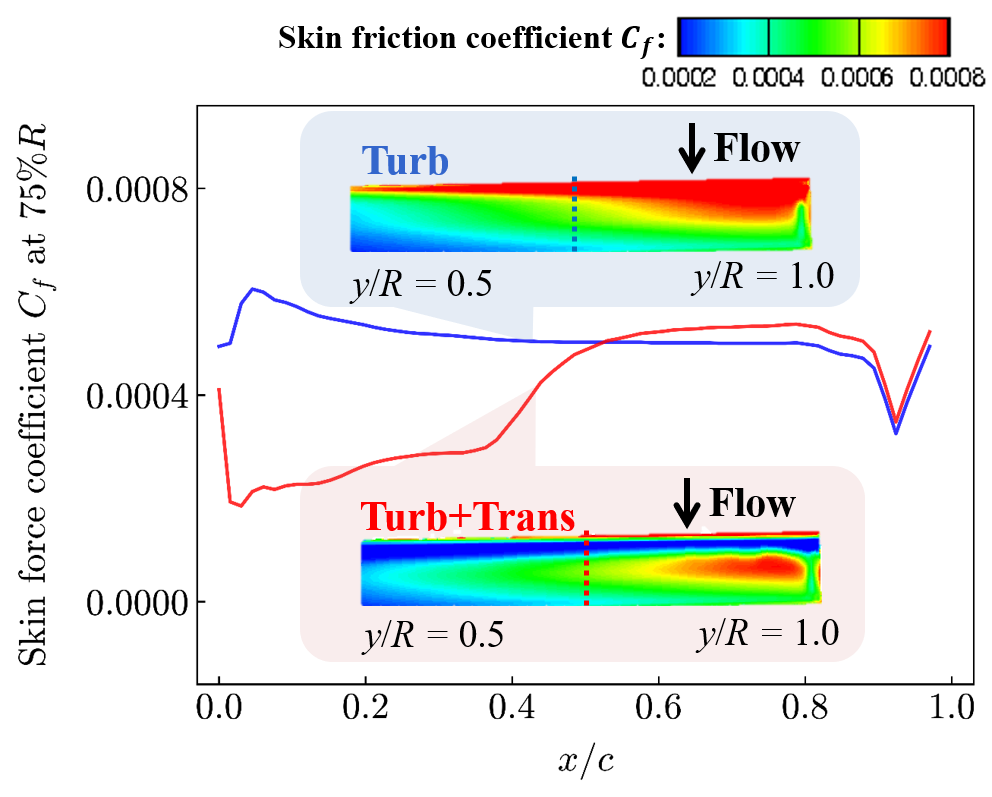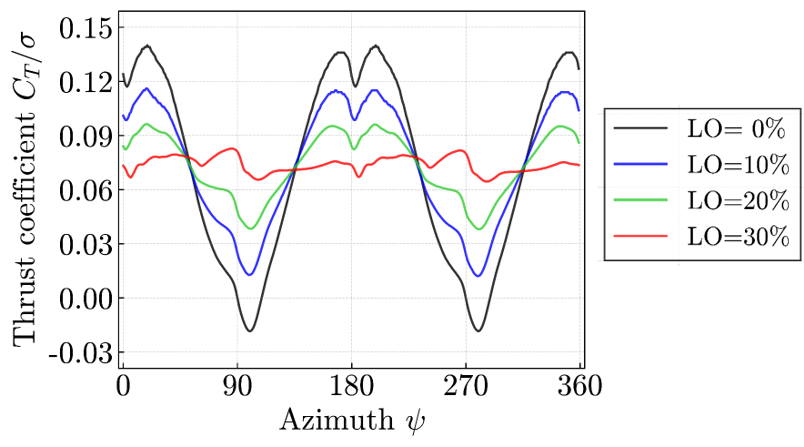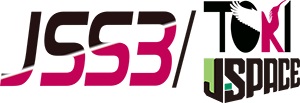High-spped rotorcrafts technology trainning
JAXA Supercomputer System Annual Report April 2019-March 2020
Report Number: R19ETET04
Subject Category: Skills Acquisition System
- Responsible Representative: Kaito Hayami, Graduate student, Tokyo University of Agriculture and Techonology
- Contact Information: Kaito Hayami(k-hayami@st.go.tuat.ac.jp)
- Members: Yasutada Tanabe, Hideaki Sugawara, Kaito Hayami
Abstract
Study for the aerodynamic characteristics of coaxial rotors.
Reference URL
N/A
Reasons and benefits of using JAXA Supercomputer System
In order to perform a rotorcraft analysis tool.
Achievements of the Year
Numerical analyses are performed using a rotorcraft CFD tool to research a coaxial rotor which is a part of the next generation rotorcraft. The numerical results suggest two remarks.
[1]The applying of a transition model is valid for the rotorcraft CFD analysis. The improvement of numerical accuracy on the blade surface is attributed by the transition model (Fig. 1).
[2]Lift offset, which is a flight parameter of the coaxial rotor, can control the magnitude of vibratory thrust fluctuation generated on the rotor (Fig. 2). The adjustment of optimal lift offset in responce to flight condition realize the reduction of thrust fluctuation.

Fig.1: The distribution of skin fricition on the blade upper surface at 75% radius chord-cross section. The blue line shows the results obtained by turbulence model (not considering transition), and the red line shows the results obtained by the turbulence+transition model. There is an obious difference between the two results, especially at 0-50% chord. The applying of transition model improves the numerical accuracy of skin friction.

Fig.2: The variation of thrust coefficient against the blade azimuth. Thrust fluctuates cyclically in response to the chages of blade azimuth. The fluctuation is also affected by lift offset (LO), and the amlitude of the flucutation is reduced.
Publications
– Oral Presentations
[1]Hayami, K., Sugawara, H., Tanabe, Y., and Kameda, M. , “Numerical Simulation of the Aerodynamic Characteristics of Coaxial Rotors”, The Japan Society for Aeronautical and Space Sciences 50th annual meeting, (2019).
[2]Hayami, K., Sugawara, H., Tanabe, Y., and Kameda, M. “Investigation of Aerodynamic Interaction of a Lift Offset Coaxial Rotor by Numerical Simulation.”, 8th Asian/Australian Rotorcraft Forum, (2019).
[3]Hayami, K., Sugawara, H., Tanabe, Y., and Kameda, M. “Numerical Investigation of Aerodynamic Interference on Coaxial Rotor”, AIAA SciTech, (2020).
Usage of JSS2
Computational Information
- Process Parallelization Methods: N/A
- Thread Parallelization Methods: OpenMP
- Number of Processes: 1
- Elapsed Time per Case: 10 Hour(s)
Resources Used
Fraction of Usage in Total Resources*1(%): 0.32
Details
Please refer to System Configuration of JSS2 for the system configuration and major specifications of JSS2.
| System Name | Amount of Core Time(core x hours) | Fraction of Usage*2(%) |
|---|---|---|
| SORA-MA | 173,552.07 | 0.02 |
| SORA-PP | 562,500.28 | 3.64 |
| SORA-LM | 1.60 | 0.00 |
| SORA-TPP | 129,876.64 | 7.84 |
| File System Name | Storage Assigned(GiB) | Fraction of Usage*2(%) |
|---|---|---|
| /home | 287.40 | 0.24 |
| /data | 12,428.98 | 0.21 |
| /ltmp | 2,308.24 | 0.20 |
| Archiver Name | Storage Used(TiB) | Fraction of Usage*2(%) |
|---|---|---|
| J-SPACE | 0.00 | 0.00 |
*1: Fraction of Usage in Total Resources: Weighted average of three resource types (Computing, File System, and Archiver).
*2: Fraction of Usage:Percentage of usage relative to each resource used in one year.
JAXA Supercomputer System Annual Report April 2019-March 2020


